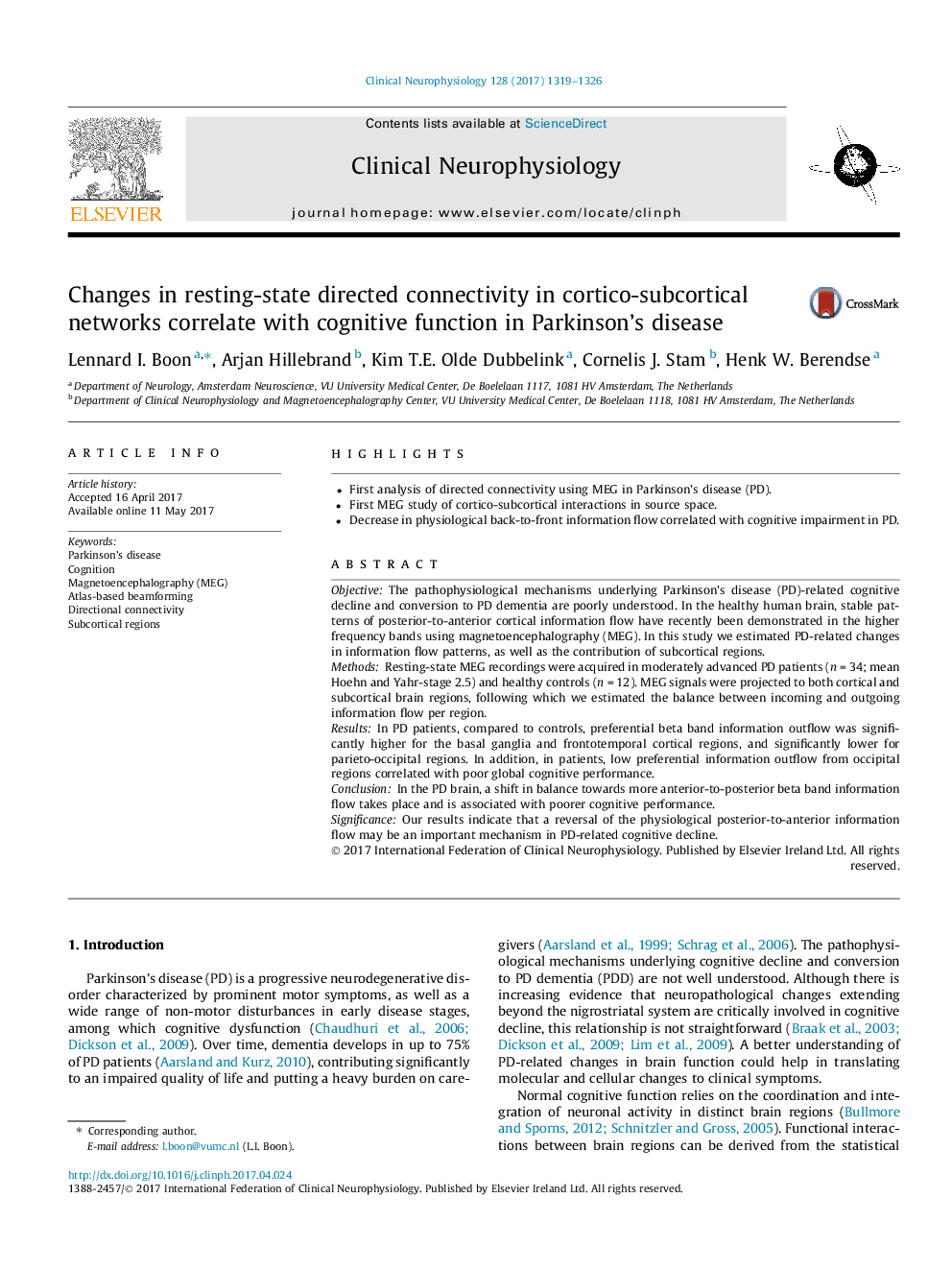| Article ID | Journal | Published Year | Pages | File Type |
|---|---|---|---|---|
| 5627841 | Clinical Neurophysiology | 2017 | 8 Pages |
â¢First analysis of directed connectivity using MEG in Parkinson's disease (PD).â¢First MEG study of cortico-subcortical interactions in source space.â¢Decrease in physiological back-to-front information flow correlated with cognitive impairment in PD.
ObjectiveThe pathophysiological mechanisms underlying Parkinson's disease (PD)-related cognitive decline and conversion to PD dementia are poorly understood. In the healthy human brain, stable patterns of posterior-to-anterior cortical information flow have recently been demonstrated in the higher frequency bands using magnetoencephalography (MEG). In this study we estimated PD-related changes in information flow patterns, as well as the contribution of subcortical regions.MethodsResting-state MEG recordings were acquired in moderately advanced PD patients (n = 34; mean Hoehn and Yahr-stage 2.5) and healthy controls (n = 12). MEG signals were projected to both cortical and subcortical brain regions, following which we estimated the balance between incoming and outgoing information flow per region.ResultsIn PD patients, compared to controls, preferential beta band information outflow was significantly higher for the basal ganglia and frontotemporal cortical regions, and significantly lower for parieto-occipital regions. In addition, in patients, low preferential information outflow from occipital regions correlated with poor global cognitive performance.ConclusionIn the PD brain, a shift in balance towards more anterior-to-posterior beta band information flow takes place and is associated with poorer cognitive performance.SignificanceOur results indicate that a reversal of the physiological posterior-to-anterior information flow may be an important mechanism in PD-related cognitive decline.
